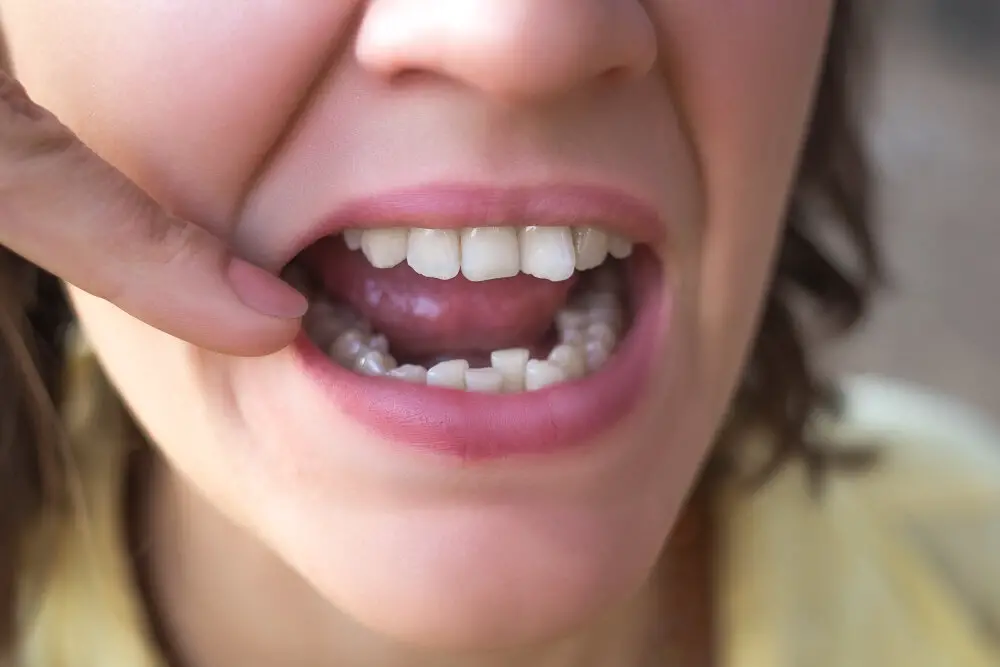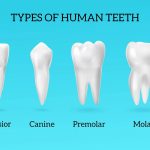Say Goodbye to White Spots on Teeth with These Effective Home Remedies

A bright, white smile is something that many people desire, as it exudes confidence, good health, and attractiveness. However, white spots on teeth can be unsightly and may make people self-conscious about their smiles. White spots can occur due to several reasons, such as poor dental hygiene, mineral deficiencies, or enamel erosion. Fortunately, there are several effective home remedies available that can help eliminate white spots on teeth and restore your smile’s natural beauty. Home remedies have been used for centuries to treat various ailments, and white spots on teeth are no exception. They are natural, readily available, and affordable options that can help you get rid of white spots on teeth without resorting to expensive dental treatments. In this article, we will explore some of the most effective home remedies that can help you say goodbye to white spots on teeth. Whether you are dealing with mild or severe white spots, these remedies can help you achieve the bright, white smile you have always wanted.
White spots on teeth are a common dental issue that can be caused by various factors. One of the main culprits is poor dental hygiene, which can lead to the accumulation of plaque and the erosion of tooth enamel. Other causes include excessive fluoride intake, trauma to the teeth, and certain medical conditions. These spots can be unsightly and may even be a sign of early decay, but fortunately, there are several effective home remedies that can help to diminish their appearance. From oil pulling with coconut oil to applying a mixture of baking soda and hydrogen peroxide, these remedies can help to restore the natural whiteness of your teeth and leave you with a brighter, healthier smile.
Dental health is of paramount importance, as it not only affects one’s oral hygiene but also has a significant impact on overall health. Poor oral hygiene can lead to a multitude of dental problems such as tooth decay, gum disease, bad breath, and tooth loss. Moreover, it can also increase the risk of systemic diseases such as heart disease, diabetes, and respiratory infections. Therefore, it is crucial to maintain good dental health by adopting healthy habits such as regular brushing and flossing, avoiding sugary and acidic foods, and visiting the dentist regularly. Taking care of your teeth and gums not only ensures a beautiful smile but also promotes overall health and well-being.
Oil Pulling

Oil pulling is a traditional Indian practice that has been gaining popularity in recent years as a natural remedy for oral health. It involves swishing oil, usually coconut or sesame oil, in the mouth for 10-20 minutes and then spitting it out. The oil is believed to pull toxins and bacteria from the mouth, promoting overall dental health and reducing the risk of cavities and gum disease. While there is limited scientific evidence to support its effectiveness, many people swear by oil pulling as a way to whiten teeth, freshen breath, and improve oral hygiene. To try oil pulling at home, simply take a tablespoon of oil and swish it around your mouth for 10-20 minutes, making sure to move it between your teeth and around your gums. Spit the oil into a trash can or outside, as it can clog pipes if spit into a sink. You can repeat this process once or twice a day, preferably in the morning on an empty stomach. Some people find it helpful to add a drop of essential oil, such as peppermint or tea tree oil, to the oil for added flavor and antibacterial properties. While oil pulling is generally considered safe, it’s important to note that it should not be used as a substitute for regular brushing and flossing, as well as visits to the dentist for professional cleanings and check-ups.
Oil pulling is a traditional Indian folk remedy that involves swishing oil, typically coconut or sesame oil, in your mouth for several minutes before spitting it out. The purpose of this practice is to improve oral hygiene and remove toxins from the body. Proponents of oil pulling claim that it can whiten teeth, freshen breath, and even improve overall health by reducing inflammation and boosting the immune system. While there is limited scientific evidence to support these claims, many people swear by oil pulling as a natural and effective way to maintain oral health. If you’re looking for a simple and affordable way to brighten your smile and improve your dental health, oil pulling may be worth a try.
If you’re struggling with white spots on your teeth, there are various home remedies you can try to get rid of them. One effective method is oil pulling, which involves swishing a tablespoon of coconut or sesame oil in your mouth for 20 minutes before spitting it out. Another option is to mix baking soda with water to create a paste, then brush your teeth with it for two minutes before rinsing. You can also try rubbing the inside of a banana peel on your teeth for a few minutes each day, as the minerals in the peel can help remove the spots. Whatever method you choose, be consistent and patient in your efforts to see the best results.
Oil pulling is a traditional Ayurvedic practice that involves swishing oil around in the mouth to improve oral hygiene. This technique has gained popularity in recent years due to its various benefits for dental health. Oil pulling is believed to reduce harmful bacteria in the mouth, prevent plaque buildup, and promote healthy gums. It has also been shown to help whiten teeth and freshen breath. Some of the best oils for oil pulling include coconut oil, sesame oil, and olive oil. By incorporating oil pulling into your daily dental routine, you can improve your overall oral health and say goodbye to white spots on your teeth for good.
Success stories are inspiring and motivate people to strive for similar achievements. When it comes to white spots on teeth, many individuals have experienced success with various home remedies. From oil pulling with coconut oil to using baking soda and hydrogen peroxide, these natural remedies have proven to be effective in removing white spots and improving overall oral health. By incorporating these remedies into their daily routines and being consistent with their use, individuals have been able to achieve the desired results and regain confidence in their smiles. These success stories serve as a testament to the power of natural remedies and the importance of taking care of our oral health.
Baking Soda

Baking soda, also known as sodium bicarbonate, is a popular and effective home remedy for treating white spots on teeth. Its mild abrasive properties help to remove surface stains and plaque buildup, which can cause discoloration and white spots. Baking soda is also alkaline in nature, which helps to neutralize acids in the mouth that can erode the enamel and cause white spots. To use baking soda for treating white spots on teeth, simply mix a small amount of baking soda with water to form a paste. Apply the paste to your teeth and brush gently in circular motions for 2-3 minutes. Rinse your mouth thoroughly with water, and repeat this process once or twice a week for best results. However, it’s important to note that excessive use of baking soda can damage the enamel and lead to tooth sensitivity, so it’s best to use this remedy in moderation. In addition to its teeth whitening benefits, baking soda is also a versatile household ingredient that can be used for cleaning, deodorizing, and more. It’s affordable, widely available, and safe for most people to use. So, if you’re looking for a natural and effective way to treat white spots on your teeth, give baking soda a try and see the results for yourself!
Baking soda, also known as sodium bicarbonate, is a white powder that is commonly used in baking and cooking. However, it is also a popular ingredient in many home remedies, including teeth whitening. Baking soda has a mild abrasive effect that can help remove surface stains on teeth caused by coffee, tea, or tobacco. It also has antibacterial properties that can help prevent the growth of bacteria in the mouth, reducing the risk of cavities and gum disease. When mixed with water, baking soda forms an alkaline solution that neutralizes the acid in the mouth, promoting a healthier oral environment. However, it is important to use baking soda in moderation, as excessive use can damage tooth enamel.
Baking soda is a natural teeth whitener that has been used for centuries. To use baking soda for teeth whitening, first, mix a small amount of baking soda with water to form a paste. Then, use a toothbrush to apply the paste to your teeth, making sure to get into all the nooks and crannies. Leave the paste on your teeth for a few minutes before rinsing thoroughly with water. It’s important not to leave the paste on for too long, as baking soda can be abrasive and damage tooth enamel. Repeat this process once a week until you see the desired results. Baking soda is a great option for those looking for a natural and affordable teeth whitening solution.
While home remedies for white spots on teeth can be effective, it’s important to be aware of the risks and side effects. Some remedies, such as using lemon juice or apple cider vinegar, can erode tooth enamel and cause further damage to your teeth. Excessive brushing or using abrasive materials like baking soda can also wear down enamel and cause sensitivity. Additionally, some people may be allergic to certain ingredients in these remedies, leading to an allergic reaction. It’s important to speak with a dentist before trying any at-home remedies to ensure they won’t cause harm to your teeth and gums.
Success stories are the ultimate motivation for people who are struggling with a problem. In the case of white spots on teeth, success stories can be a source of hope and inspiration for those who want to get rid of this dental issue. These stories can come from people who have tried different home remedies and have successfully removed the white spots from their teeth. They can also come from dental professionals who have treated patients with white spots and have seen positive results. Success stories can encourage people to try different remedies and techniques until they find the one that works for them. They can also help people understand that white spots on teeth can be treated and that they don’t have to live with this problem forever.
Apple Cider Vinegar

Apple cider vinegar is a versatile home remedy that offers numerous health benefits. It is known for its ability to whiten teeth and eliminate white spots on teeth. This vinegar is made by fermenting apple cider with yeast and bacteria, which converts the natural sugars into acetic acid. The acetic acid in apple cider vinegar has antibacterial properties that help to eliminate harmful bacteria in the mouth. It also helps to remove stains from teeth and reduce the appearance of white spots. To use apple cider vinegar for teeth whitening, mix equal parts of water and apple cider vinegar and swish the mixture in your mouth for 30 seconds before spitting it out. Be sure to rinse your mouth with water afterwards to prevent any damage to your teeth. Apple cider vinegar is a natural remedy that has been used for centuries to treat a variety of health issues. It is rich in vitamins, minerals, and enzymes that help to improve overall health. This vinegar is also an effective remedy for white spots on teeth. The acetic acid in apple cider vinegar helps to dissolve the calcium deposits that cause white spots on teeth. To use apple cider vinegar for white spots on teeth, mix one tablespoon of apple cider vinegar with one teaspoon of baking soda to make a paste. Apply the paste to your teeth and let it sit for two minutes before rinsing it off with water. Repeat this treatment once a week for best results.
ACV, or apple cider vinegar, is a type of vinegar made from apples. It is a popular home remedy for a variety of health issues, including teeth whitening. ACV contains acetic acid, which has bleaching properties that can help remove stains from the teeth. It also has antimicrobial properties that can help kill bacteria in the mouth, preventing plaque buildup and bad breath. However, it is important to use ACV in moderation and diluted with water, as it can be highly acidic and potentially damage the enamel of the teeth if used too often or in high concentrations.
Apple cider vinegar (ACV) is a popular natural remedy for teeth whitening because of its acidic properties that help remove stains on the teeth. To use ACV for teeth whitening, mix equal parts of ACV and water in a cup. Swish the solution around your mouth for about 1 minute, making sure that it reaches all areas of your teeth. Spit the solution out and rinse your mouth thoroughly with water. It is important to note that ACV is highly acidic, and excessive use can weaken the tooth enamel, so it is recommended to use this method only once or twice a week. Additionally, it is advisable to brush your teeth with toothpaste after using ACV to neutralize the acidity and protect the enamel.
While home remedies can be effective in removing white spots on teeth, it’s important to be aware of the potential risks and side effects. Some remedies, such as using baking soda or lemon juice, can be abrasive and damage tooth enamel if used too frequently or aggressively. Additionally, some natural ingredients may cause allergic reactions in certain individuals. It’s crucial to use these remedies in moderation and always consult with a dentist if you have any concerns about the health of your teeth and gums. As with any dental treatment, it’s better to err on the side of caution and prioritize the long-term health of your smile over quick fixes.
Success stories of people who have effectively gotten rid of white spots on their teeth using home remedies are inspiring. These stories are proof that it is possible to achieve a brighter, healthier smile without expensive dental treatments. Incorporating natural ingredients such as baking soda, coconut oil, and apple cider vinegar in their oral hygiene routine, these individuals have managed to remove the unsightly white spots on their teeth and prevent their recurrence. Their journeys serve as motivation for those struggling with similar dental issues to take charge of their oral health and explore natural remedies for a brighter, more confident smile.
Hydrogen Peroxide

Hydrogen peroxide is a common household item that has a wide range of uses, including for dental care. It can help to whiten teeth and remove stubborn stains, making it a popular choice for those looking to improve their smile. This powerful oxidizing agent works by breaking down the chemical bonds that hold stains together, effectively lifting them from the surface of the teeth. However, it is important to use hydrogen peroxide in moderation and to follow proper safety precautions, as it can cause irritation or damage to the gums and mouth if used improperly. To use hydrogen peroxide for teeth whitening, mix equal parts of the solution with water and swish it around in your mouth for 30-60 seconds before spitting it out. You can also dip your toothbrush into the solution and brush your teeth gently for a few minutes before rinsing with water. It is recommended to use hydrogen peroxide no more than once a week, as overuse can lead to sensitivity or other dental issues. With regular use, hydrogen peroxide can be an effective and affordable way to brighten your smile and improve your overall dental health.
Hydrogen peroxide is a chemical compound with the formula H2O2. It is a pale blue liquid that is widely used as a disinfectant, bleaching agent, and oxidizer. Hydrogen peroxide is a powerful oxidizing agent, which means that it is capable of breaking down organic and inorganic compounds. It is also highly reactive and can easily decompose into water and oxygen. In dentistry, hydrogen peroxide is used as a teeth whitening agent due to its ability to penetrate the enamel and break down the stains. However, it should be used with caution as it can cause tooth sensitivity and damage the gums if not used properly.
Hydrogen peroxide is a common household item that can be used to whiten teeth. To use it, mix equal parts of hydrogen peroxide and water in a small cup. Use a toothbrush to apply the mixture to your teeth, making sure to cover all surfaces. Brush for two minutes, then rinse your mouth thoroughly with water. It’s important not to swallow the mixture, as hydrogen peroxide can be harmful if ingested. Repeat this process once a week until you achieve your desired level of whiteness. It’s important to note that hydrogen peroxide can cause sensitivity in some people, so it may not be suitable for everyone. If you experience any discomfort, discontinue use and consult with a dentist.
While home remedies for white spots on teeth are generally safe, they do come with some risks and potential side effects. For example, using acidic ingredients such as lemon juice or apple cider vinegar may erode the enamel on your teeth if used too frequently or for too long. Similarly, baking soda can be abrasive and may damage your enamel if used excessively. Additionally, some people may be allergic to certain ingredients, such as coconut oil or tea tree oil, which could cause irritation or an allergic reaction. It’s important to use these remedies in moderation and to be mindful of any adverse reactions. If you experience any pain or discomfort, it’s best to consult with a dentist.
Success stories are the driving force behind any article’s credibility, and the same holds true for home remedies to get rid of white spots on teeth. Numerous people have tried and tested these remedies and achieved satisfactory results. From oil pulling with coconut oil to using a baking soda and lemon juice mixture, these remedies have proven to be effective in removing white spots on teeth. Some people have even reported that they were able to restore their teeth’s natural shine and whiteness with these remedies. These success stories are a testament to the power of natural ingredients and the effectiveness of home remedies. If you’re struggling with white spots on your teeth, try out some of these remedies and see the results for yourself.
White spots on teeth can be a result of mineral loss or excessive fluoride intake. While professional treatment is always an option, there are also several home remedies that can help reduce or eliminate white spots on teeth. These include oil pulling with coconut oil, applying a paste made of baking soda and water, rubbing the affected area with banana peel or orange peel, and using remineralizing toothpaste. Additionally, maintaining good oral hygiene, eating a balanced diet, and avoiding sugary and acidic foods can also help prevent white spots from forming on teeth. With these effective and natural remedies, you can say goodbye to white spots on your teeth and achieve a brighter, healthier smile.
Consulting a dentist is an essential aspect of maintaining good oral health. Dentists are trained professionals who can identify any underlying dental problems that may not be visible to the naked eye. They can provide valuable advice on how to maintain proper oral hygiene, which can help prevent dental problems such as cavities, gum disease, and tooth decay. Regular visits to the dentist can also help detect any early signs of oral cancer, which can be life-threatening if left untreated. In addition to this, dentists can provide a range of treatments to improve the appearance of teeth, including teeth whitening, bonding, and veneers. Overall, consulting a dentist is crucial for maintaining healthy teeth and gums, as well as improving the appearance of one’s smile.
In conclusion, white spots on teeth are not only unsightly, but they can also be a sign of dental decay. Fortunately, there are several home remedies that can help remove these spots and improve the overall health of your teeth. From oil pulling and baking soda to apple cider vinegar and coconut oil, there are a variety of natural remedies that can help brighten your smile and promote healthy teeth and gums. However, it’s important to remember that prevention is always better than cure. So, be sure to maintain good oral hygiene habits, such as brushing twice a day, flossing regularly, and visiting your dentist for check-ups and cleanings. By following these tips and incorporating home remedies into your routine, you can say goodbye to white spots on teeth and hello to a healthier, happier smile!
Conclusion

In conclusion, saying goodbye to white spots on teeth can be achieved through effective home remedies. These remedies include oil pulling, baking soda, apple cider vinegar, and lemon juice. While these remedies may take some time to achieve results, they are safe and natural alternatives to expensive dental procedures. By incorporating these remedies into your daily routine and maintaining good oral hygiene practices, you can restore your teeth’s natural color and achieve a brighter, healthier smile. So, say goodbye to those pesky white spots and hello to a confident, radiant grin!







